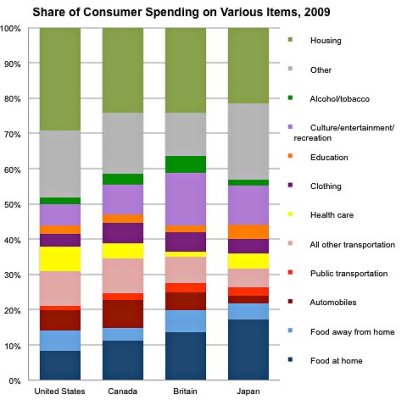mickeyd
Give me a museum and I'll fill it. (Picasso) Give me a forum ...
Food seems to be our greatest expense these days in our household. We no longer have a mortgage, but HO insurance and property tax run a combined $400/mo, so I guess that would count as "housing" in this comparison. Housing is lower for us than most of the USA. Interesting comparison.
What America Buys : Planet Money : NPR
We can also use this data to see how Americans' spending patters have changed over time. Here's a comparison of spending in 1949 versus 2011.

Source: Bureau of Labor Statistics
Credit: Lam Thuy Vo / NPR
One thing that jumps out here is the relative decline in spending on food and clothes. This is largely the result of incredible productivity increases in agriculture and manufacturing that have made food and clothes much, much cheaper in real terms.
What America Buys : Planet Money : NPR

